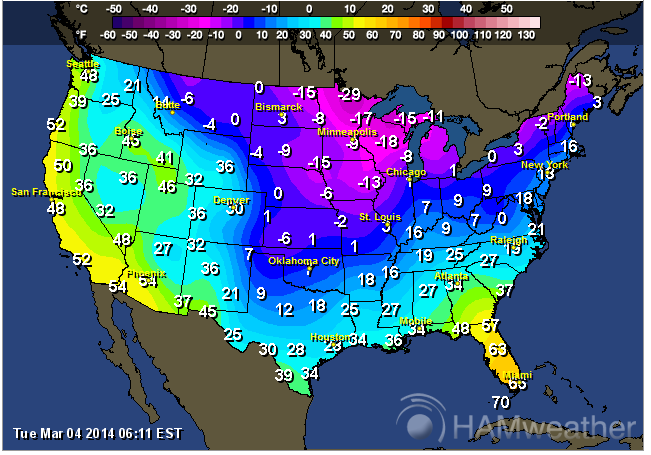Remember, in 1948 weather forecasting was still in its infancy, especially compared to where we are today. There were no computer models or satellites, and the first tornado detected by radar didn't happen until five years later. The successful forecast of a tornado on this day was a mix of serendipity, luck, and the skill of two Air Force forecasters, Capt. Robert C. Miller and Major Ernest Fawbush.
 |
| Aircraft damaged at Tinker AFB by March 20 tornado. |
Fawbush and Miller began to study surface and upper air charts to look for conditions associated with severe weather. Remember, this was well before computers - all the charts were all hand plotted and hand-analyzed. Obviously, their research couldn't have progressed very far in just a few days. However, Fawbush and Miller noticed that the weather conditions forecast for March 25th were very similar to those on March 20th. They notified the base commander General F. S. Borum. With the support and urging of Borum, they issued a severe weather and tornado forecast. That, in turn activated the new severe weather plan. Aircraft were moved to hangars, loose objects tied down, and personnel prepared to move to safe areas. By mid-afternoon afternoon of March 25th a line of storms developed southwest of Tinker AFB. At 3:00 p.m. the tornado warning was issued for the period of 3:00 p.m. to 6:00 p.m. A supercell formed just west of the base just before 6:00 p.m., and soon after the tornado crossed the air base. The resulting damages were much less than from the tornado just days earlier.
 |
| Bombers damaged during March 25, 1948 storm at Tinker AFB. |
The success of that forecast spurred on continued research. There was little known about the weather patterns associated with severe storms and the two Air Force officers became pioneers in severe weather forecasting research. Fawush and Miller published a number of papers on their research, and in 1967 Miller published a technical report for the Air Force titled "Notes on Analysis and Severe-Storm Forecasting Procedures of the Air Force Global Weather Central." It was revised in 1972 and became the bible of severe weather forecasting at that time.
In July of 1950 the U.S. Weather Bureau rescinded its ban on using the word "tornado" allowing its use in public forecasts. Unfortunately, the Federal Communications Commission continued to ban its use on radio and television for the same reason as the Weather Bureau's initial ban. This continued until 1952, when meteorologist Harry Volkman broadcast the first televised tornado warning over WKY-TV (now KFOR-TV) in Oklahoma City. The warning was issued at the urging of the station manager, who had obtained the alert from the Air Weather Service and felt it was the station's responsibility to alert its viewers about impending severe weather.
For more information, see the following sources:
Tornado Forecast - 50 Years - The Historic Forecast
Maddox, Robert A.; Crisp, Charlie A. (August 1999). "The Tinker AFB Tornadoes of March 1948" (PDF). Weather and Forecasting (American Meteorological Society) 14 (4): 492–499.




















